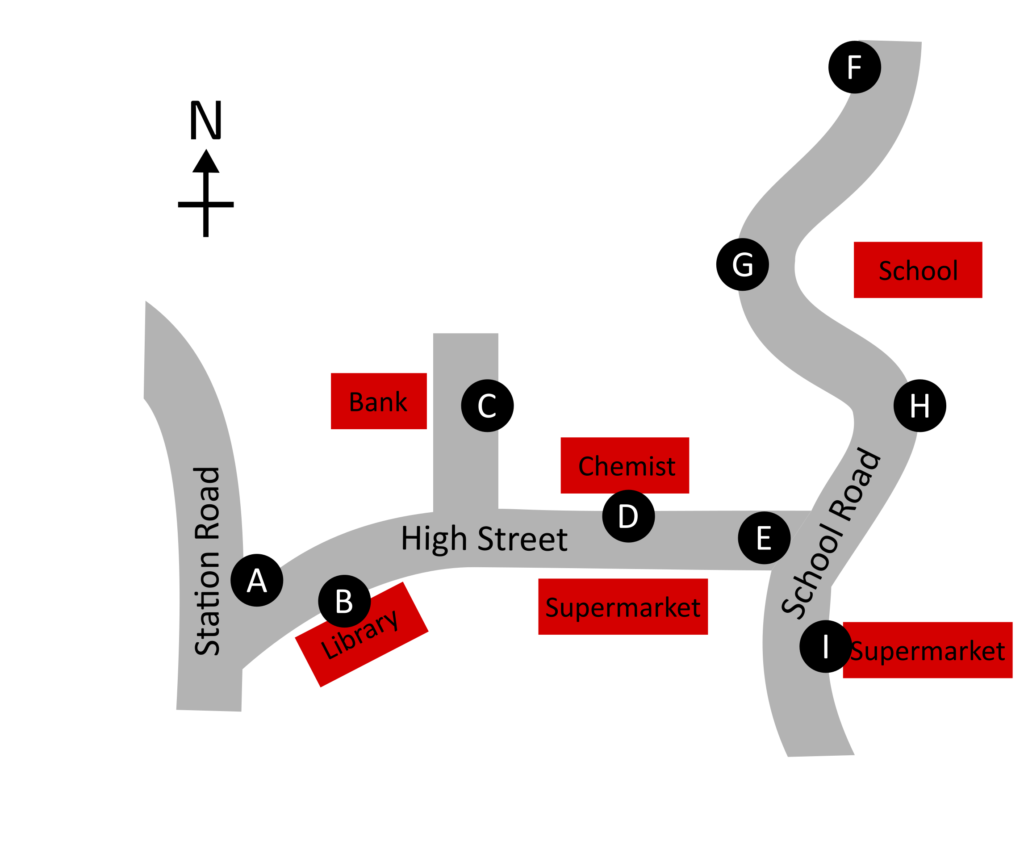IELTS Listening Maps and Plans
Join my IELTS telegram channel
A common task in the second part of the listening is to give you a map or plan and ask you to identify where places are. Typically you will get a map with several places marked with letters (A, B, C, etc), while the questions will list the places you need to find.
There will usually be more places marked than questions, and you should not need to use the same place twice.
Strategy
Maps and plans always seem to cause some students difficulty, but there are some strategies to help you do well with these questions.
As with most listening tasks, the key is to use your reading time wisely, and to listen carefully.
Step 1: Look at the Map
There are no particular instructions you need to read for this task, so start by looking at the map.
There are two things you can do at this point to help you:
- Try to identify where the speaker will begin talking about.
- Consider how the position of the letters can be described.
Look at the map below and think about these two points. When you have finished look at the answers underneath.
Proposed Traffic Changes in Granford

Starting point – most likely near the letter A.
A – on the corner of Station Road and High Street
B – in front of the library
C – opposite the bank
D – in front of the chemist/opposite the supermarket on the High Street
E – in the middle/at the end of the High Steet, at the the junction with School Road
F – to the north of the school on School Road
G – opposite the school
H – on the bend on School Road, south of the school
I – in front of the supermarket on School Road
Step 2: Listen and Write the Answers
Now you are ready to listen.
Start by looking at your starting point, but remember that they can (and often do) jump all over the map.
Remember that in this task the usual trick is that the speaker says where something used to be. You are not interested in this. If the speaker says “it was” or “it used to be”, listen for phrases like “but now”, “these days” or “more recently.”
Listen to the audio, and answer the questions.

14 New Traffic Lights ___
15 Pedestrian Crossing ___
16 Parking Allowed ___
17 New ‘No Parking’ Sign ___
18 New Disabled Parking Spaces ___
19 Widened Pavement ___
20 Lorry Loading/Unloading Restrictions ___
14 E
15 D
16 B
17 G
18 C
19 H
20 I
Step 3: Check Your Answers
As always, make sure you have an answer for every question. If you don’t, at least take a guess. There is no negative marking, so having an answer is always better than no answer.
Don’t re-think the answers you have written. People often lose marks because they got the right answer, but changed their mind afterwards.
When you have an answer to all the questions, start reading the next section.
Acknowledgement
The listening audio and map used here are taken from Cambridge Academic IELTS 13, which can be purchased here.





